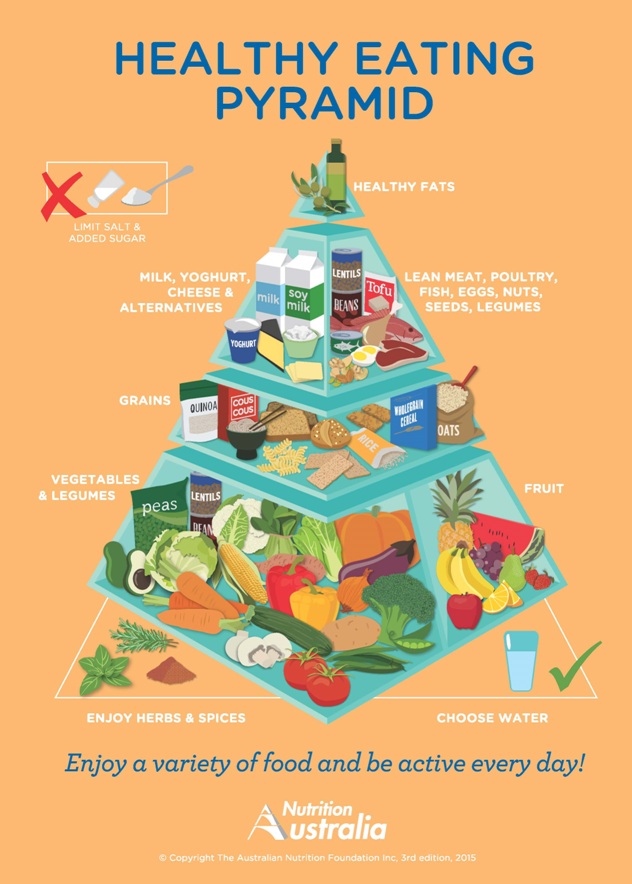Today Nutrition Australia has released the latest version of the “Healthy Eating Pyramid” for Australians. The #newpyramid is here, in an effort to combat growing nutrition confusion and risky fad diets.
One of the positive changes is that there is a greater emphasis on fresh vegetable (mostly) and fruit intake which is now at the base of the pyramid.
Grains, cereals and other starchy carbohydrate foods now have a smaller representation on the next level up. Vegetables now occupy the largest space and herbs and spices are included as well which is great.
It also puts healthy fats at the very top of the pyramid which could be seen as a good thing. At least now people know to MONITOR their fat intake, as it contains almost TWICE as many calories per gram as protein and carbohydrates (yes even the “good fats”), rather than just avoiding fats altogether.
They have also made the distinction between sugar and ADDED sugar, saying the latter along with high salt intakes is the one to avoid.
The Pyramid is never going to fit EVERYONE in the population, but it can be a good place to start for those who have no idea about nutrition. If you read the Qualia Review you will learn that we are all unique and our body’s needs are all individual so there will never be a perfect food pyramid that suits everyone’s nutritional beliefs – but promoting more veggies can only be a positive thing. Hopefully this can bring some positives changes that affect the growing obesity and health crises in Australia.
—
MaxNRG Personal Training is a mobile personal trainer company in Melbourne, VICTORIA. All our fitness trainers are highly qualified and are the types of trainers who are willing to go above and beyond to be excellent and truly help people reach their fitness and exercise goals. Our goal is provide the best personal training services available in Australia.
MaxNRG Personal Training Pty Ltd
Gladstone Park VIC 3043
0403 741 278
view our local listing for more info >>
https://www.maxnrgpt.com.au

